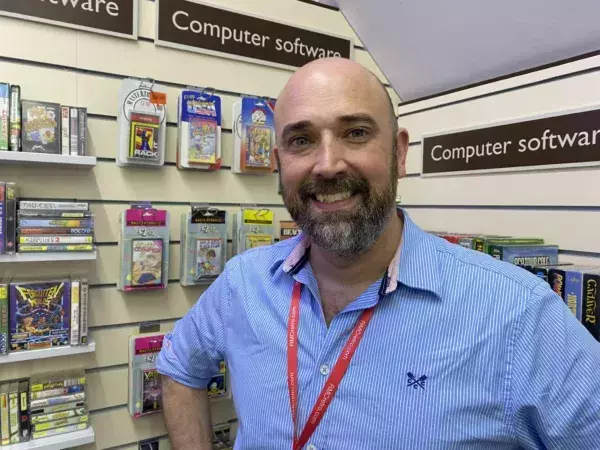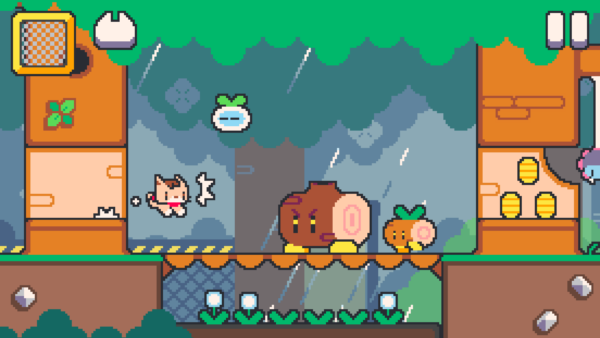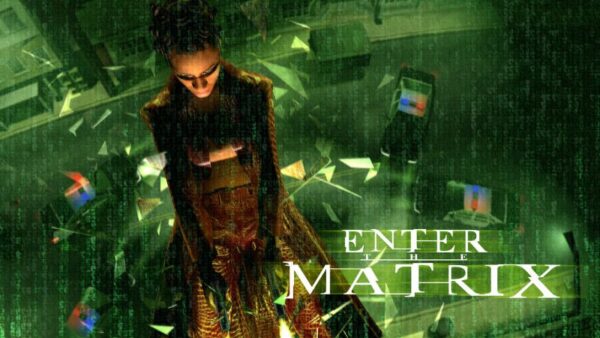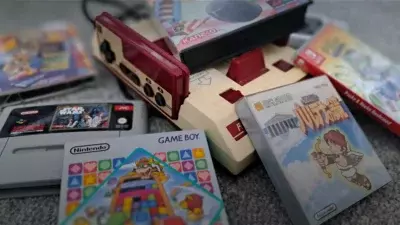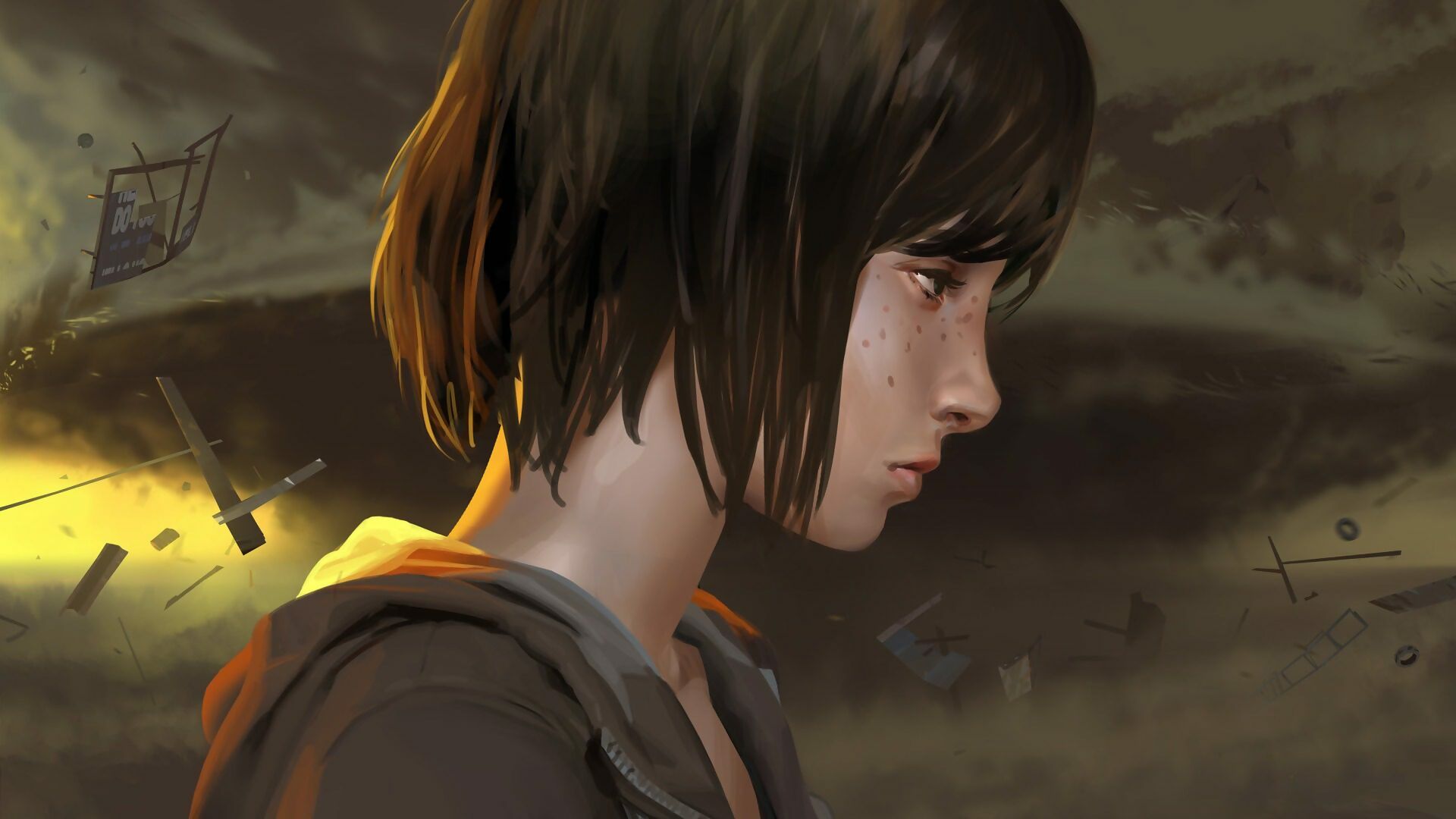
SPOILER NOTE: the following contains spoilers for Life is Strange, Spec Ops: The Line, and What Remains of Edith Finch.
Roads are an age-old metaphor for choice, and with good reason. The intricate routes we take in life determine where we end up – but more than that, they define who we become along the way. Choice in video games is a similar principle; a mapping of decisions, of possible routes a player can take, leading to a number of outcomes. But what happens when choices are placed within a closed circuit? In the face of inevitability, what is the value of player choice?
Every gamer has heard variations on the words, “Your choices matter,” or “This action will have consequences,” but can the value of choice only be measured in terms of its effect on the game world? Characters die, cities burn, and worlds are irrevocably changed, as a result of our decisions. In reality, though, it’s the games that limit our potential outcomes, and force us to honestly examine the value of our choices, that are often the most memorable.
The Only Choice
Life is Strange is a franchise rooted in choice. Not only are its protagonists placed in the role of decision-makers, but they’re also given literal power to change events. Max Caulfield gains the power to rewind time, allowing her to repeat the same situations over and over – a perspective she shares with the player. “It’s just like loading a backup save,” explains the game’s co-creative director, Raoul Barbet. “Max has the same knowledge as the player and reacts to the world accordingly.”
Some guy called you a loser? Rewind time and impress him instead. Someone asks you a difficult question? Rewind time once you’ve found the answer. It doesn’t take long to realise that Max’s motivations are often childish. “Max is a character who doesn’t want to grow up,” says writer Jean-Luc Cano. “Her ability to rewind time and change her decisions is deeply linked to who she is.”
But as the game goes on, it becomes apparent that both Max’s power and her decisions are part of a larger coming-of-age narrative, one which culminates in the game’s final decision: ‘Sacrifice Arcadia Bay’ or ‘Sacrifice Chloe’.

Edouard Caplain’s concept art for Life Is Strange depicts the lighthouse where everything begins, and ends.
The game ends where it began – a trail winding to a lighthouse, a cyclical path which, no matter the choices you make, leads to a final decision. In some ways this is problematic – should games about choice end with a choice? Especially a choice which, in terms of its consequences, overshadows all those that came before it? Cano says it doesn’t matter: “It’s not necessarily the choice you make that serves as the metaphor for growing up, but the fact that you have to make it at all. Throughout the game, Max is finding ways to change everything, to find a perfect ending, only to find there is no perfect ending.”
The choice, therefore, represents far more than the immediate consequences of death and destruction – it defines who Max and the player have become together. “It’s not just about how we make choices, good or bad, selfish or not, but more how we live with those choices,” Barbet reflects. “This final choice can seem very egotistical indeed, but it is the player who does it, and will have to live with it.”
The inevitability of the final decision may render the game’s earlier choices meaningless, but only in terms of how they impact the world. They still have meaning for the player, as they clarify how you feel about Chloe, the people of Arcadia Bay, and Max herself. They’re a set of choices to prepare you for the only choice that truly matters. Michel Koch, Life is Strange’s other creative director, sums it up perfectly: “Everything we had in the game, every choice and consequence, was created to lead you to this point. For the player to make a decision based on their vision of Max and Chloe. Somehow, you need to accept the grief, accept the past, stop trying to make everything perfect, and then think about the future.”

Walt Williams is an award-winning game writer, as well as author of industry memoir, Significant Zero.
Positive reinforcement
“Game design tends to empower players through choice, by having the game respond positively to their will,” Walt Williams says. “Choose to save someone, a game will let you save them. Choose to kill them, the game will let them die. Regardless of whether a choice is morally good, bad, or neutral, the game will allow it. That’s positive reinforcement. To make players question themselves and their choices, all we had to do was make the choices not conform to the player’s desire. Suddenly, players didn’t have a safety net of positive reinforcement, and no longer felt confident in their decisions.”
The Wrong Choice
Back in 2012, Spec Ops: The Line dared to defy the expectations of player choice. It follows the story of three Delta Force operatives searching for survivors in the sandstorm-ravaged city of Dubai. Instead of survivors, they find hell on earth. The narrative parallels Joseph Conrad’s Heart of Darkness – you journey deeper and deeper into the city, searching for the enigmatic Colonel Konrad, all the while witnessing the horrors of war, and trying your best to remedy the chaos that surrounds you. But Spec Ops’ secret? Your best isn’t good enough.
“We were trying to make realistic choices,” says Walt Williams, the game’s narrative designer. “When games show the impact of player choice, it’s to make the player feel as if they have power over the world. Their choices cause the game and other characters to change. That’s a nice fantasy. We wanted choices to affect the player, so that changes would be internal, occurring within the player over the course of the game.” The result of this is Spec Ops’ profound sense of powerlessness; players are given choice, but their choices can’t change the world.

Juxtaposing the lavish iconography of Dubai with the atrocities of war creates a powerful sense of horror.
Despite their best intentions, things only get worse in Dubai, but the player keeps going, engaging in what Williams describes as a “sunk cost fallacy” – a parallel they share with the game’s protagonist. “Players expect that no matter what they do in a game, they will eventually be faced with a greater evil which they will defeat to ultimately have their actions justified,” Williams explains. “That’s Walker’s emotional journey. He’s in denial over his actions, and is hoping that if he just keeps going and finds Konrad, he will justify everything he’s already done. But the further the player and Walker go, the more damage they cause.”

Michael Oberschneider’s concept art depicts an earlier idea for Spec Ops, involving car travel.
Spec Ops’ choices are like periodic psyche tests charting a decline. Each one is an expressive moment of feedback, where players can act on how the game is making them feel – perhaps anger at being unable to reach an ideal outcome, or frustration at not being given the power to change things. Whether choosing to gun down civilians to avenge a comrade, or letting a man burn to death, Spec Ops challenges player identity through expressions of powerlessness.
“You have the choice to play the game, and you have the choice to stop playing,” Williams states. “Ultimately, those are the only choices that matter. We rarely know the exact impact of our decisions in life, but we can get a sense that things are going badly, and we can change direction. We can learn, and we can change.”

Ian Dallas is Creative Director at BAFTA-winning studio, Giant Sparrow.
Purpose
“Games are an interesting simulacrum for the problem of finding meaning in life and they almost never address it,” says Ian Dallas. “If you’re feeling anxious because life doesn’t seem to have any purpose, games can be comforting because purpose in games is almost always clear and concrete. I think that’s a potentially wonderful and life-affirming answer, that if nature doesn’t give us a purpose then we’ll invent our own, but I think that only works when you acknowledge the absurdity and arbitrariness of the challenges you create for yourself. Otherwise it feels like delusional escapism. I think most games are playing it straight, and frankly, it’s depressing.”
No Choice
From the very beginning, What Remains of Edith Finch shows players how the game will end. The Finch house rises into the sky as if trying to escape itself; at its peak, there’s a definitive end-point. It’s an apt visual metaphor for the game’s primary theme, and true inevitability. “One of the biggest goals we had was to remind people that they’re going to die,” says creative director, Ian Dallas. “It’s not a question of conveying new information. But encouraging people to think about something they seem biologically wired not to is a hard challenge.”
Returning to her childhood home, Edith Finch is intent on learning the stories of her family, but as she explores each room, kept preserved and shrine-like, the tragic fates of her kin unfold. “The challenge for us was encouraging players to feel like death was not a failure,” Dallas explains. “It took a lot of different creative solutions from every member of the team, but what started out as a design challenge evolved into the game’s signature tone: marching happily to your doom.”

In What Remains of Edith Finch, every room represents a life.
What Remains of Edith Finch constantly reminds players that death is the only ending, yet somehow keeps players choosing to explore the house in spite of it. In many ways, this proves the validity of Edith Finch’s central philosophy: that endings don’t define stories. “Every story is over before it begins,” Dallas reflects. “And the ending is rarely the point of anything, it’s just a skeleton you can hang the more interesting bits on top of.”
This idea of accepting endings is also echoed in the final words of Edith herself: “I don’t want you to be sad I’m gone, I want you to be amazed any of us had the chance to be here at all.”

The Finch house contains a homely clutter which can’t help but inspire nostalgia.
In the face of an inevitable end, Albert Camus famously proposed we have but one choice: live or die. Just as in games, we can accept our choices are meaningless and decide to stop playing, or we can choose to continue, finding meaning in the act of choosing itself. When framed as a rebellion against our powerlessness, player choice becomes so much more meaningful – it’s able to better represent the nature of human existence and gain internal complexity. All the same, many games still focus on maximising player power and destructive effect.
“I don’t know what the legacy of Spec Ops is,” Williams reflects. “As far as I can tell, the legacy people seem to be holding onto is that it (messed) them up when they played it. Which is unfortunate. We showed them the disease, but they only get excited about the symptoms.”
Player choice can’t be quantified in bodies, blood, or broken worlds. The way choices make us feel, let us express ourselves, and allow us to change, is their true gift. Power is a lie, but powerlessness is the truth of our lives, and those choices, touched by inevitability, are some of the most memorable in all of gaming.


